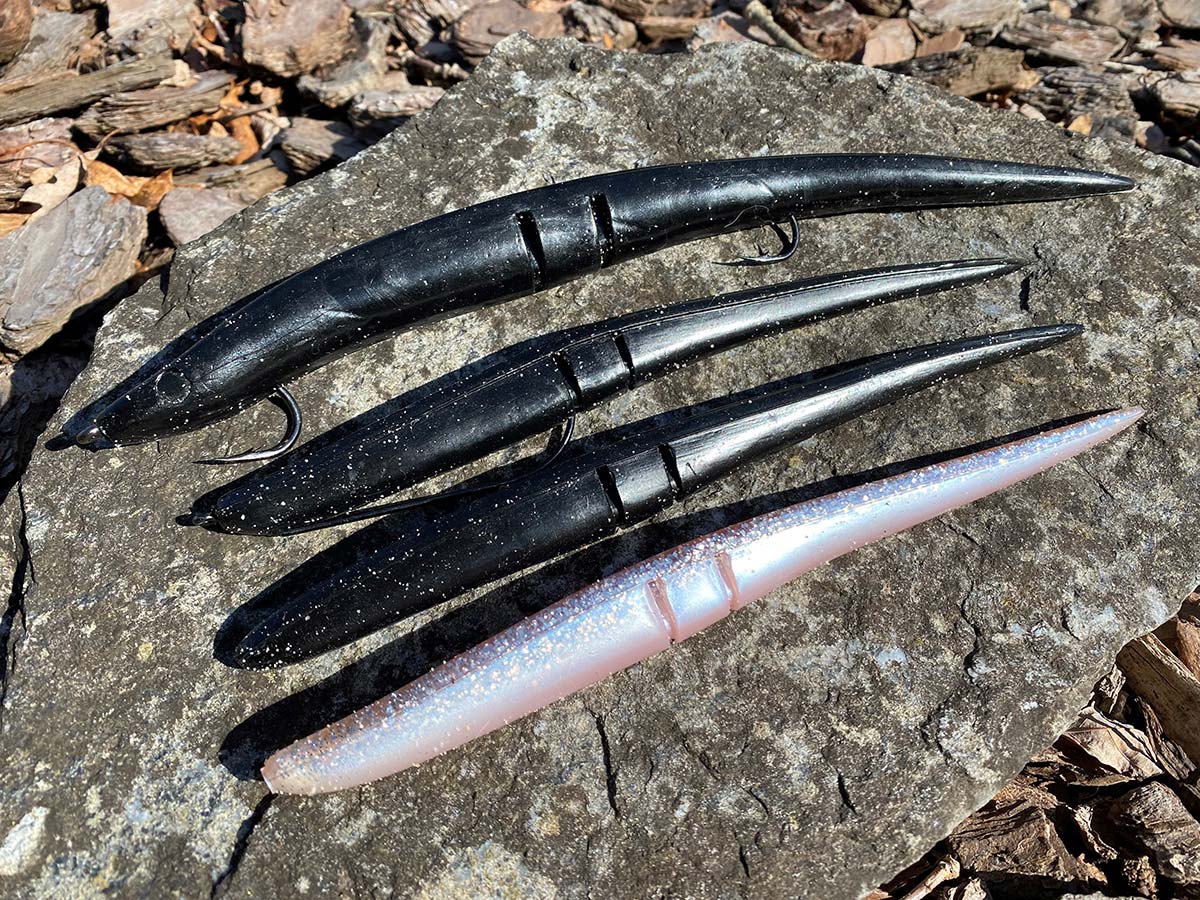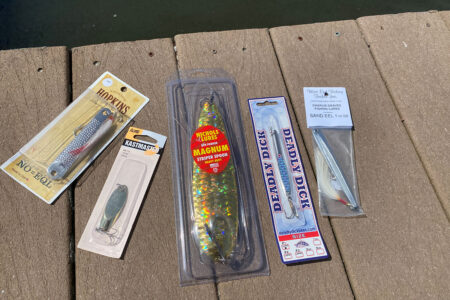
One lure with three different rigging options that all work wonders.
The Slug-Go is an all-time favorite among striper fishermen across the East Coast. With an assortment of sizes and colors, the Slug-Go is perfect for almost any situation. I always found that this bait is most effective unweighted, due to its ability to briefly suspend in the column like a pausing or injured baitfish. Here are three ways I like to rig the weightless Slug-Go.
The most common method is the Texas rig. This involves using a specialized hook called a wide gap worm hook. When choosing the proper hook size, a good rule of thumb is to select a hook that matches the width of the bait. I prefer the Owner Worm Hook Twistlock 3X due to its hook gap, extra strength, and presentation. To rig the bait effectively, I simply insert the twist lock into the nose of the Slug-Go, turn the hook around, and slide it through the body. The point of the hook should be hidden. This ensures that the bait is rigged weedless. This lightweight method allows the Slug-Go to pop and glide just beneath the water’s surface.
The second method I use for rigging the Slug-Go is the tandem rig. I use 80- to 100-pound Dacron line, two 6/0 octopus hooks, and a rigging needle. To begin, I double over two feet of Dacron and tie an overhand knot on the loose ends. Next, I take the knotted side of the Dacron and tie a simple uni knot to the first hook. Following, I hold the Slug-Go belly up and insert the rigging needle just below the middle belly groove of the bait. Then, I attach the end of the Dacron to the rigging needle and slide it through the Slug-Go until it appears at the nose of the bait. At this time, the belly hook should hang just below the bait. Here’s when I grab the super glue and gently dap a few drops onto the shank of the hook. Now, I pull the Dacron tight and guide the belly hook firmly into the bait. If the procedure is done correctly, the hook should sit centered in the belly of the Slug-Go with a few feet of Dacron hanging out of the nose. Finally, the time has come to rig the second hook. I start by cutting the overhand knot hanging off the nose of the bait. Next, I thread half the hook through the nose of the bait, making sure not to foul in the Dacron. I secure the hook into place by taking the excess Dacron and tying 8 to 10 half-hitches up the shank. To lock the half hitches down, I tie an overhand knot in the split ends and pull each end tightly until the knot slides down to the eye of the hook. To finish, I add a few drops of superglue to the hook and thread it through the nose. All said and done, I prefer the tandem rig over other options due to its ability to keep large fish pinned with two hooks. Although this rig may be time-consuming, the two-hook setup is killer for landing more fish.
The third method I use for rigging the Slug-Go involves a single octopus-style hook, rigged in the head of the bait and secured with Super Glue. A few of my favorite brands of octopus hooks include Owner, Mustad, and Gamakatsu. There really isn’t a ‘perfect’ hook size for the method, just match whatever size Slug-Go you’re using up with a sensibly-sized hook. To get started, I hold the Slug-Go belly down and measure to where the bend of the hook will come out of the belly of the bait and mark it with the point of the hook. Next, I grab the octopus hook, dab it in Super Glue and immediately thread the hook into the bait, making sure the point exits through my pre-marked location. It’s important to thread the hook into the bait swiftly to ensure that the glue binds with the Slug-Go properly. The advantage of this rig is that it allows the Slug-Go to move more freely through the midsection and tail, which in turn allows it to glide and undulate without the restraint of a belly hook. Another perk to this rigging style is that the Slug-Go can be used as a topwater — if you reel fast enough the whippy tail will wake and splash along the surface of the water enticing a hungry bass to crush it.




